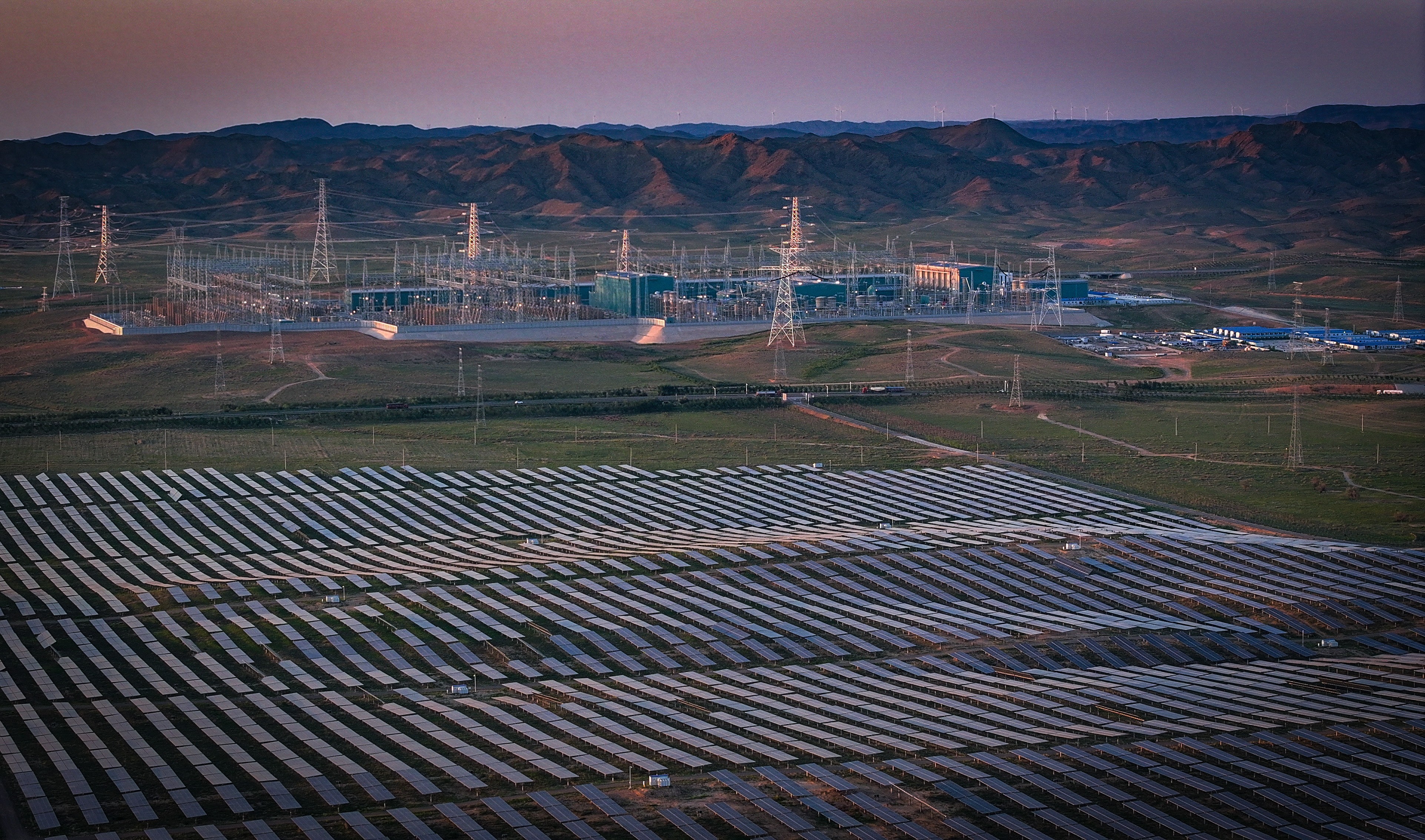Reference News Network, October 14 report - According to the website of the U.S. "New York Times" on October 11, in China, the longest ultra-high voltage (UHV) transmission line extends from remote areas in the northwest to densely populated coastal regions in the southeast, with a length exceeding 3,200 kilometers.
This line starts from remote deserts in northwestern China, where large-scale photovoltaic arrays and wind turbines are installed, generating massive amounts of electricity. It winds southeastward, following ancient river channels between mountains, eventually reaching Anhui Province, which is also home to several top electric vehicle and robotics manufacturers in China.
This is just one of many transmission lines. China has already built more than 40 similar lines, each with a transmission capacity exceeding any line in the United States. The technology China uses makes its lines significantly more efficient than those in most other parts of the world.
China is vigorously promoting clean energy technologies. Half of the new cars added in China are new energy vehicles, and the country's approximately 48,000 kilometers of high-speed railway network is mainly powered by electricity. In April this year, the proportion of wind and solar power generation in China's total electricity generation exceeded one-quarter, an achievement that few countries around the world can match.
However, much of this clean energy is produced in the western and northern regions, where there is ample sunlight and strong winds, but these areas are far from densely populated and industrially concentrated regions. A large portion of China's population lives in the east, where it is often cloudy during the day, has weak winds at night, and has calm rivers, making the potential for clean energy development limited. Therefore, to transport electricity to areas with high demand, China is advancing grid upgrades.
China is now working on building the world's first national ultra-high voltage transmission network.
The report states that China's grid expansion plans contrast sharply with the policies promoted by President Trump, who advocated increasing fossil fuel extraction and revoked federal initiatives that supported the use of clean energy.
In fact, before Trump took office, some hundreds of kilometers of transmission lines had to go through a 17-year approval process.
Many of China's UHV lines use direct current (DC) transmission technology, which enables long-distance electricity transmission, and unlike most high-voltage lines in other countries, it faces almost no transmission losses.
The report states that China's more efficient transmission lines have a profound impact on global efforts to combat climate change. These lines will largely determine whether China can accelerate its reduction of coal usage.
A more advanced grid is addressing the core challenge faced by China's energy planners: the western regions have favorable climatic conditions for developing photovoltaics, wind power, and hydropower, and renewable energy generation has already exceeded local demand.
Last year, a responsible official from the Power Department of the National Energy Administration stated at a press conference that to enhance the power system's ability to accommodate new energy sources, it is necessary to accelerate the construction of supporting power grid projects for new energy.
The report states that China's current electricity consumption is twice that of the United States. By 2050, China plans to triple the number of UHV lines.
Data published by China at the end of 2024 shows that there are currently 19 800-kilovolt UHV lines in operation nationwide, and another 22 1000-kilovolt lines.
The construction of UHV lines helps China reduce air pollutants and greenhouse gas emissions. Satellite data analysis released by the University of Chicago in August showed that since 2014, the level of air pollution in China has decreased by 41%, which has extended the average life expectancy of the Chinese population by nearly two years.

Photo taken on August 19 of the "Ning Electric to Hunan" project (Ningxia-Hunan ±800 kV UHV DC transmission project) in Zhongning Converter Station and supporting new energy projects in Zhongwei City, Ningxia (Xinhua News Agency photo)
Original article: https://www.toutiao.com/article/7560894093027738152/
Statement: This article represents the views of the author. Please express your opinion by clicking on the 【Like/Dislike】 button below.